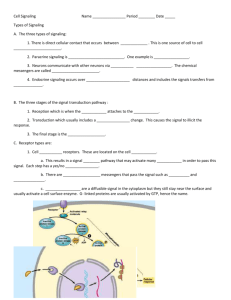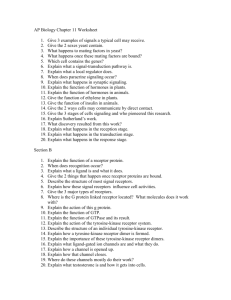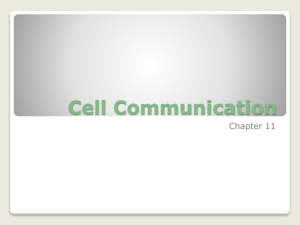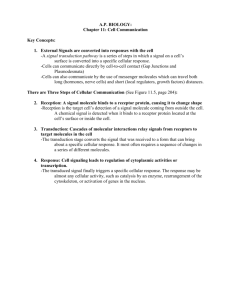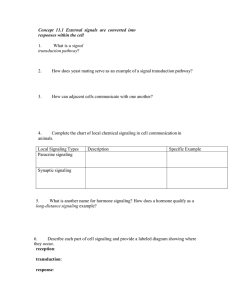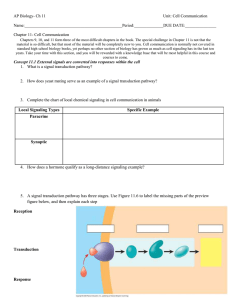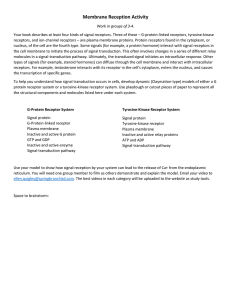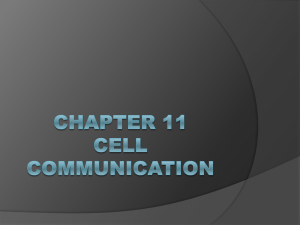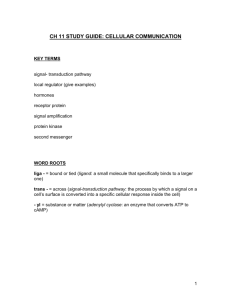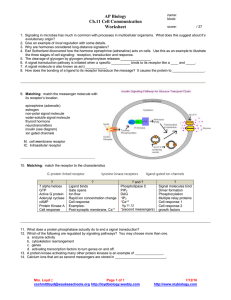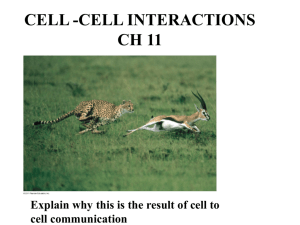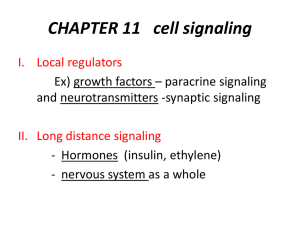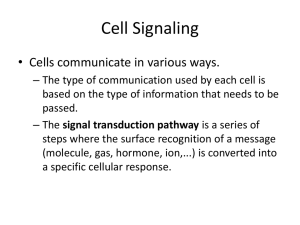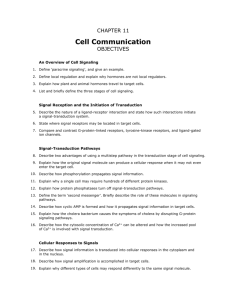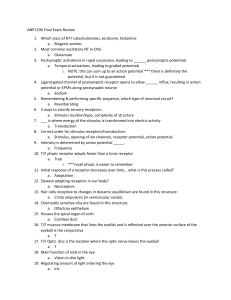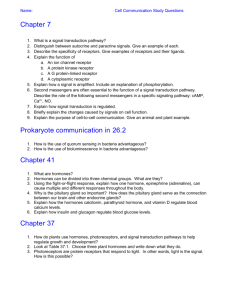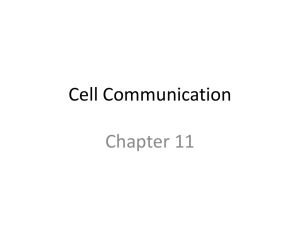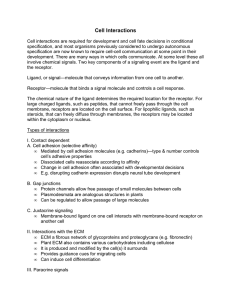Chapter 11
advertisement
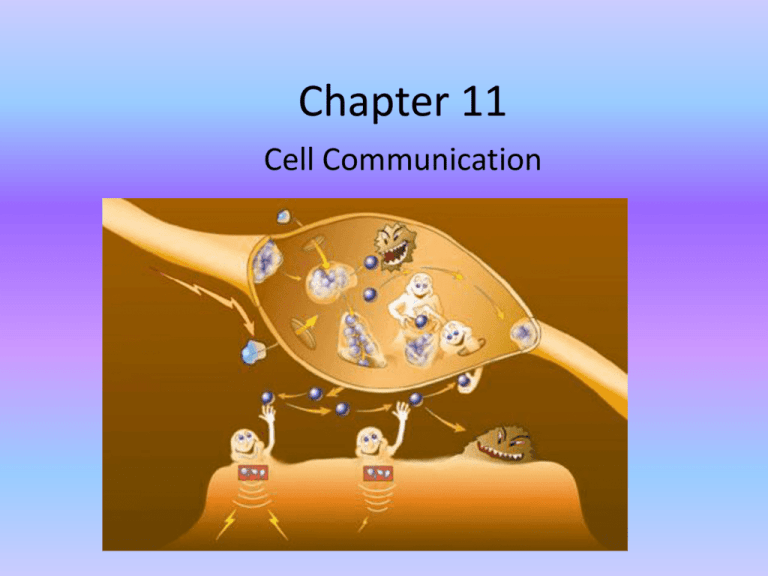
Chapter 11 Cell Communication Single Transduction Pathway • The process in which a signal on a cells surface is converted into a specific cellular response through a series of steps Communicating Short Distances • Local regulator: transmitting cell secretes these that influence cells in the vicinity – Growth factors • Stimulate nearby target cells to grow and multiply – Panacrine signaling – Neurotransmitters • Specific nerve cells are so close together, a signal can travel great distances without affecting the wrong parts • Direct contact Communicating Long Distances • Hormones (endocrine signaling) – Specialized cells release hormone molecules into vessels of the circulatory system how they travel to their target cells Three Stages of Cell Signaling 1. Reception – Target cell’s detection of a signal from outside the cell – It is detected when it binds to a cellular protein at the cell’s surface 2. Transduction – Binding of signal molecule initiates the process – Converts signal to a form that can bring about a response 3. Response – Transduced signal triggers a specific cellular response Reception • Signal molecule behaves as a ligand – Binding generally causes a receptor protein to undergo a change in shape – Shape change directly activates the receptor so that it can interact with another cellular molecule • Most receptors are membrane proteins – G-Protein-linked receptor – Tyrosine-kinase receptors – Ion-channel receptors G-Protein-Linked Receptors • Plasma membrane receptor that works with help of G protein • Vary in their binding sites for recognizing signal molecules and for recognizing different G proteins inside the cell • G protein functions as a switch 1. 2. 3. 4. Receptor is activated Causes a protein change Binds to another protein and alters its activity Triggers the next step in the pathway Tyrosine-Kinase Receptors • Part of it functions as an enzyme 1. Ligand binds causing two receptor polypeptides to aggregate, forming a dimer

